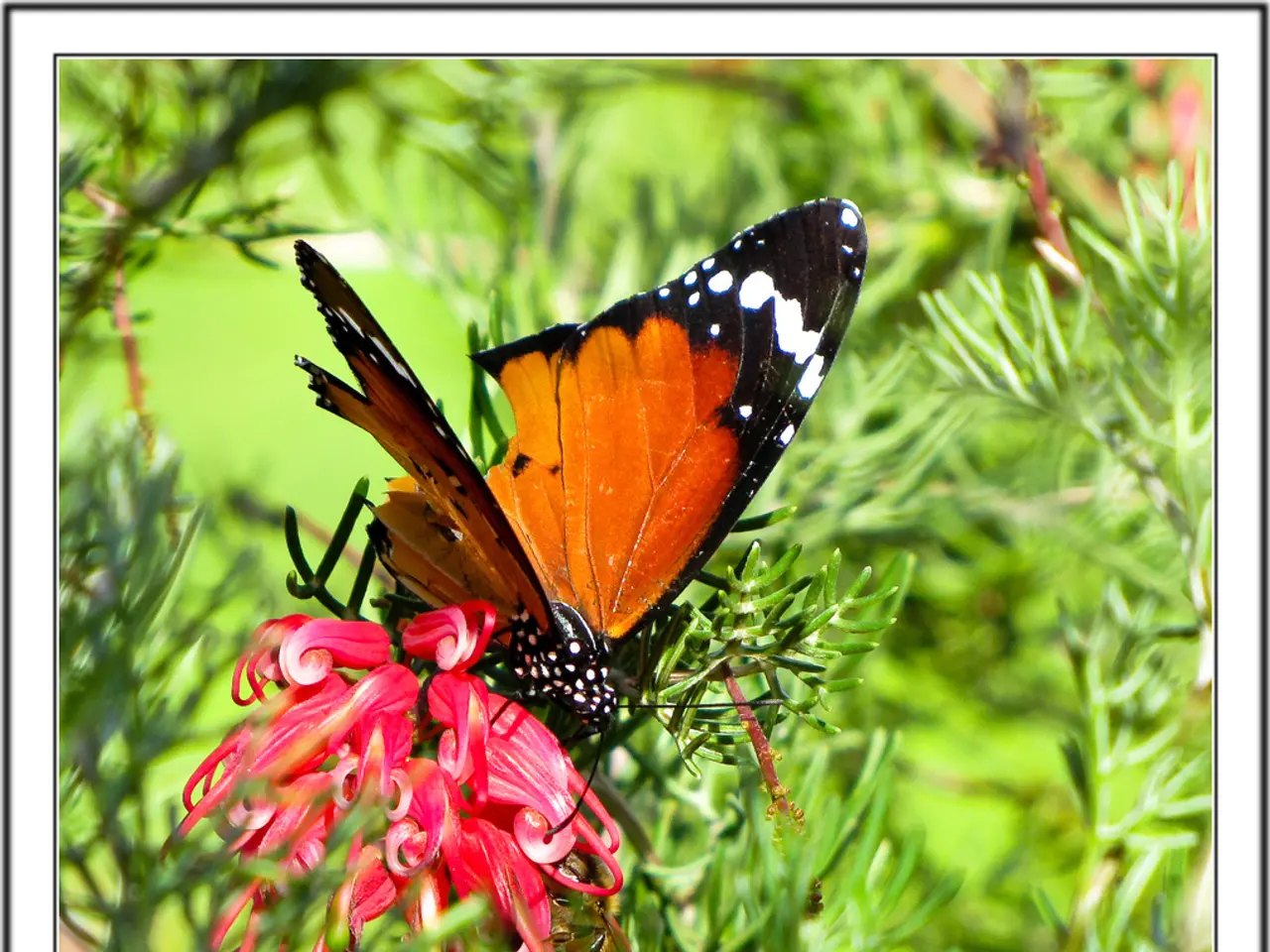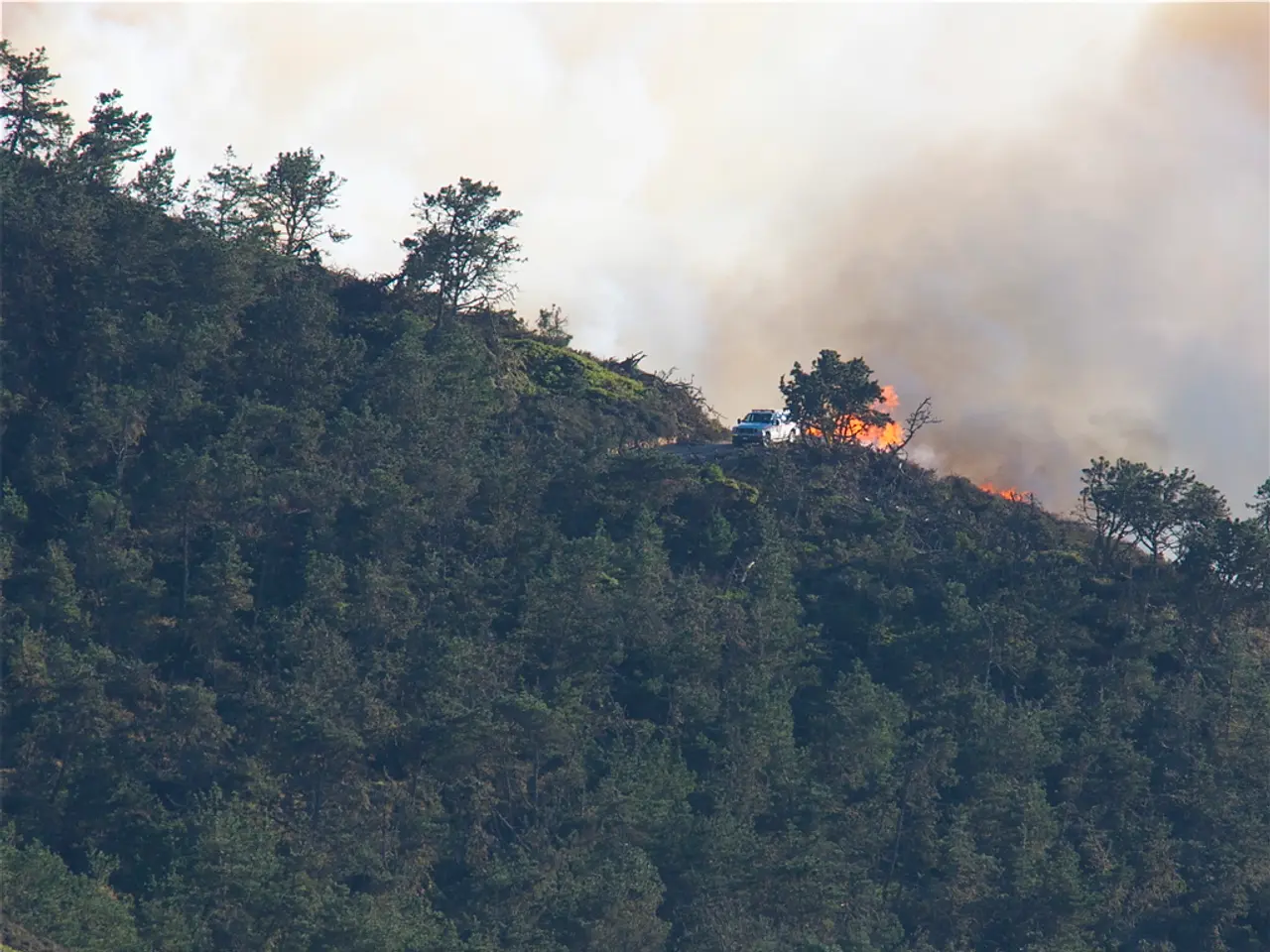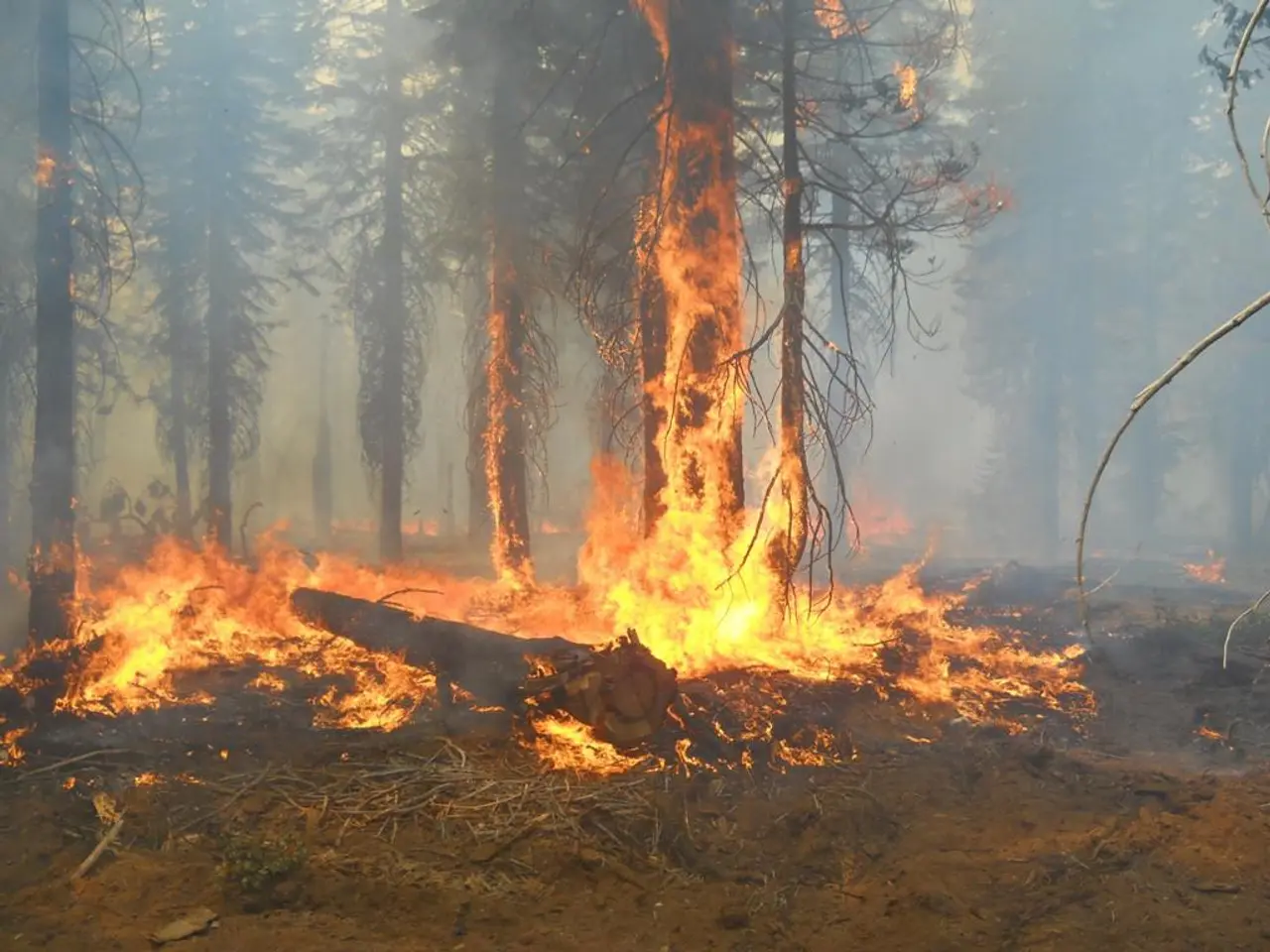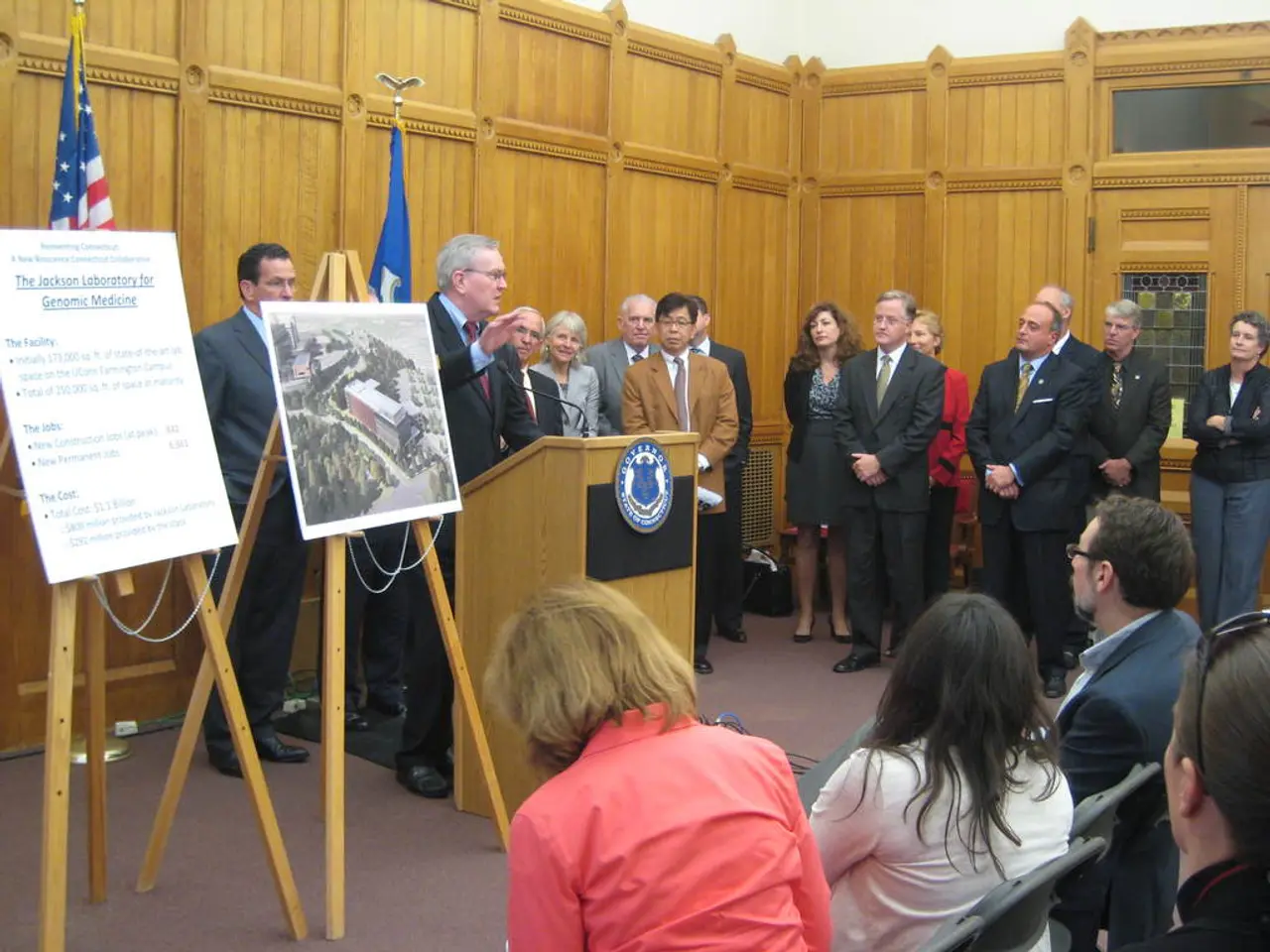A flourishing butterfly season in Hesse, thus far. - Steady Expansion of Butterfly Population in Hesse Region
In the picturesque landscapes of Hesse, Germany, a vibrant transformation has taken place. This year has been hailed as a 'very good year for butterflies' by the local environmental association, NABU Hesse, following a significant increase in butterfly populations.
Four years ago, only 20 butterfly species were recorded at the Weinberg Wetzlar nature reserve. This year, during an excursion, an impressive 27 different species were discovered, including the Small Tortoiseshell, the Peacock, and various blue species. Among these, the Small Tortoiseshell and the Peacock, known for their striking colours, are particularly noteworthy as they lay their eggs on certain plant species, such as nettles, which thrive when left to grow longer.
The success of the butterfly populations in Hesse can be attributed to several factors. Favourable weather conditions, with moderate temperatures, play a crucial role. Low temperatures can slow down butterfly development, prolonging vulnerable stages and increasing predation risk. Conversely, suitable warm conditions allow faster development and better survival rates.
Another key factor is the continuous supply of resources. Consistent availability of nectar and host plants is essential for feeding and reproduction, supporting larger and healthier butterfly populations. The quality and diversity of habitats also play a significant role. Diverse and undisturbed habitats with appropriate plant species foster butterfly biodiversity and population stability.
Extensive grazing with sheep at the Weinberg Wetzlar nature reserve has also contributed to the increase in butterfly diversity. By allowing certain grass species to grow longer, the reserve provides a perfect habitat for butterfly species that lay their eggs on these plants.
The efforts of organisations like NABU are instrumental in this butterfly boom. NABU promotes butterfly biodiversity by conserving and restoring habitats, engaging citizens in butterfly gardening, and collaborating with scientists and local authorities to monitor populations and address threats. These initiatives align with broader efforts to support biodiversity highlighted in ecological research institutes focused on environmental variability and species interactions in Germany.
However, it's not all smooth sailing for our winged friends. Like other insects, butterflies are affected by the use of pesticides and fertilizers in agriculture. Garden areas that are left close to nature can provide sufficient food for butterflies, while allowing a small area in the garden to be left un-mowed once or twice a year can benefit them significantly.
Despite the promising numbers, it's important to note that only a few individuals of each butterfly species were found during the excursion. This underscores the importance of continued conservation efforts to ensure the survival and thriving of these delicate yet resilient creatures. As butterflies serve as very good ecological indicators, their health reflects that of our ecosystems. By nurturing butterfly populations, we are taking a step towards safeguarding our environment for future generations.
The employment policies implemented by organizations such as NABU, including community and environmental science initiatives, play a crucial role in fostering biodiversity and supporting ecological research institutes' efforts to combat climate change. Continuous endeavors to conserve and restore habitats, engage citizens in butterfly gardening, and collaborate with scientists and local authorities are essential actions to preserve the intricate balance of ecosystems, just like the Small Tortoiseshell or the Peacock butterflies, which are sensitive to changing environmental factors such as weather and the availability of resources.







